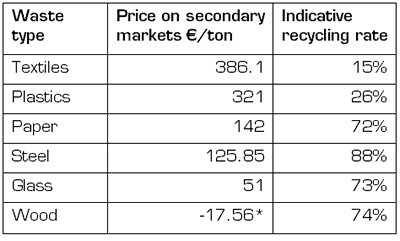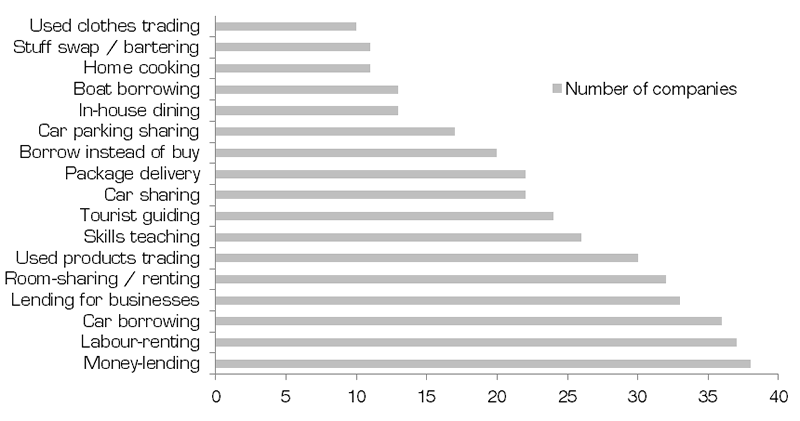Written by Guillermo Valles, Division on International Trade in Goods and Services
Most economic processes today rely on a "linear flow" of extraction, transformation, utilization and disposal of materials. By seeking large quantities of low-cost, easily accessible materials and energy across borders - the core dynamics of industrial development - the world has experienced unprecedented levels of growth in the last century.
This paradigm of production is however myopic and does not account for many external factors which we now know to exist, especially the environmental boundaries of the planet (Rockstrom, 2009).
Recent increases in resource prices, increased volatility and growing pressure on natural resources have alerted governments and business leaders to the necessity of rethinking the models attached to materials and energy use. The Paris Agreement on Climate Change, which came in to force in November 2016, provides important political momentum to this rethink. The time is right, many argue, to take advantage of the potential benefits of a "circular economy" (EMF, 2016).

 The goods of today are the resources of tomorrow at yesterday’s resource prices
The goods of today are the resources of tomorrow at yesterday’s resource prices
Product-Life Institute
This economic model - which draws upon traditional practices employed by many societies for centuries - can unlock vast economic opportunities especially in developing countries, and ultimately decouple global economic development from finite resource consumption.
Economic theory tells us that traded goods have a net positive value, thus they carry "positive" prices. At the same time, waste has been often seen as a "non-good" with negative prices, meaning governments and businesses often pay for their disposal. This is to an extent reflected in international trade rules, where trade of hazardous waste materials and persistent organic pollutants receive a level of global oversight by the Basel, Rotterdam and Stockholm Conventions (Basel Convention, 1992; Rotterdam Convention, 2013; Stockholm Convention, 2009).
Since most waste generated in the world is not hazardous, there are ample opportunities to use this resource in a better way than landfilling or simple energy extraction. Circularity means looking at waste from another perspective, seeing it as a resource with positive net value which can be tapped, transformed and traded just like virgin resources extracted from nature.
Some waste materials - such as paper, glass and plastics - already have fairly well-established secondary markets.

When considering prices and quantities traded in the three major secondary materials markets in the European Union alone, volumes are already very substantial.
Between 2002 and 2012, the combined markets for waste glass (€2.6bn), paper (€56.2bn) and plastics (€26.4bn) in the EU alone amounted to €85.2 billion in current prices, with much potential still untapped.
Electronic goods also have a large untapped circularity potential. A study from the United Nations University and UNCTAD assessed a potential of €48 billion of savings in metals and plastics present in e-waste alone (UNU, 2015).
While their recovery raises a set of safety and health issues, new technologies are being quickly introduced which allows materials to be safely handled and recycled. This brings out value in materials which were once seen as only fit for energy production or landfilling.
In non-commodity markets such as garments and the mobility sector, it is important to continue policy and culture shifts so that circularity becomes the goal of businesses and consumers. All tend to gain from it. This is an area where the developing world can provide lessons and experience to the entire planet, since circularity is already very present, with 70% of the world's population using second-hand clothes (Textile Exchange, 2012).
Another interface between trade and waste materials are attempts to create secondary material markets, complementing primary markets supplied by mining, agriculture and forestry.
This can be illustrated by the initiative of the European Commission to create a market for secondary raw materials, which could be traded among EU member States just like primary raw materials from traditional extractive resources.
The EU is working to update its directive on waste trade and one of the core principles is to avoid waste production, recycle and re-use what is possible, and minimize volumes for disposal (EC, 2008; EC, 2016).
Similar efforts, covering energy and broader areas have been proposed as a circular economy package in Europe (EC, 2016b).
The fast-emerging "collaborative economy" also sees a number of characteristics of circularity. As service-intense sectors, collaborative models are enabled by the digital economy, allowing information to be shared between individuals and companies to cut costs as well as craft new businesses. Those sectors include car-sharing, space and machinery renting (residential, office, industrial), food sharing, peer-to-peer (branchless) lending and many other areas that empower and diversify individuals and small and medium-sized enterprises (SMEs) to diversify and increase their incomes. These areas have inherent circularity aspects as they improve energy efficiency (e.g. more rational space heating), fuel efficiency (by increasing average passenger occupancy per vehicle), and reduce food waste (by monetizing food leftovers) - all through the power of information technology which is omnipresent in today's society.

While many regulatory challenges still exist, they represent areas in which circularity is quickly gaining traction. Direct ownership of products may be shifting to access to those products, in a "consumer as user" system, where many products become services based on performance contracts. From a business standpoint, circularity implies looking at reverse cycle models in value chains, focusing on collection systems that are user-friendly, cost-effective and quality-preserving (EMF, 2016). While businesses already focus on optimizing treatment and extraction technologies based on linear processes, doing exactly the same based on a circular model opens vast business, employment and transformational opportunities in a world that needs green development sectors which are at the same time environmental enhancers.
Circularity will not be achieved only by smart policies, government and even business commitments. It depends ultimately on invididuals and their capacity to adopt and use technologies which open such opportunities. These enablers include IT-powered transparency and information sharing, IT access and literacy; availability of financing and risk management tools, regulation; and the general integration of circular concepts in school and university curricula, as well as a slow cultural transformation which makes society demand more from secondary material markets instead of prizing the new.


